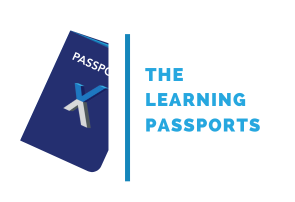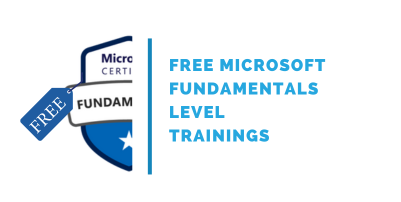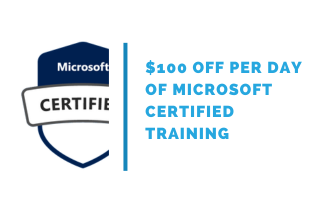
Microsoft Certified: Power Platform Functional Consultant Associate (PL200)

The PL-200 Microsoft course stands as a vital certification for individuals aiming to become proficient in the Power Platform as Functional Consultants. This program evaluates candidates' skills in deploying, customizing, analyzing, and automating business solutions using Microsoft's Power Platform.
Students will learn to perform discovery, capture requirements, engage subject matter experts and stakeholders, translate requirements, and configure Power Platform solutions and apps. They will supplement their learnings with hands-on labs to create application enhancements, custom user experiences, system integrations, data conversions, custom process automation, and custom visualizations. In this course, we will cover Power Apps, Power Automate, Power BI, and Power Virtual Agents, with additional focus on Microsoft Dataverse (formerly Common Data Service), AI Builder, connectors, and portals.
This training is a comprehensive preparation for the PL-200: Microsoft Power Platform Functional Consultant exam to earn the Microsoft Certified: Power Platform Functional Consultant Associate certification.

Public class
2875$
Duration:
5 days / 35 hours
Private class
Virtual classroom
Minimum no. of participants: 5
5 days / 35 hours
Price on request
English or French
Training plan:
Microsoft Power Platform Functional Consultant (PL-200T00)
Module 1: Describe the business value of the Microsoft Power Platform
- Explore Microsoft Power Platform
- Describe the business value of the Power Platform
- Explore connectors and Microsoft Dataverse
- Describe how Power Platform works with Microsoft 365 apps and services
- Explore how Power Platform works with Microsoft Teams
- Describe how Power Platform works with Microsoft Dynamics 365 apps
- Describe how Power Platform solutions consume Microsoft Azure services
- Explore how Microsoft Power Platform apps work together
Module 2: Get Started with Power Pages
- Get started with Power Pages
- Core tools and components of Power Pages
- Overview of Power Pages security
- Overview of Power Pages extensibility
Module 3: Create and use analytics reports with Power BI
- Use Power BI
- Building blocks of Power BI
- Tour and use the Power BI service
Module 4: Manage workspaces and datasets in Power BI
- Distribute a report or dashboard
- Monitor usage and performance
- Recommend a development life cycle strategy
- Troubleshoot data by viewing its lineage
- Configure data protection
Module 5: Create tables in Dataverse
- Table characteristics
- Dual-write vs. virtual tables
- Dataverse auditing
- Import data into your Microsoft Dataverse database
Module 6: Manage tables in Dataverse
- Identify tables and table types in Dataverse
- Create a custom table
- Enable attachments within a table
Module 7: Create and manage columns within a table in Dataverse
- Define columns in Microsoft Dataverse
- Column types in Microsoft Dataverse
- Add a column to a table
- Create a primary name column
- Restrictions that apply to columns in a table
- Create an auto numbering column
- Create an alternate key
Module 8: Create a relationship between tables in Dataverse
- Relate one or more tables - Introduction
- Relationship types that are available in Microsoft Dataverse
- Create a one-to-many relationship between tables
- Create a many-to-many relationship between tables
- Edit or delete relationships
Module 9: Working with choices in Dataverse
- Define choice column
- Standard choices column
Module 10: Get started with security roles in Dataverse
- Introduction to environment roles
- Understand environment roles
- Adding or disabling an environment user
- Understand security concepts in Dataverse
- Understand user security roles and security role defaults
- Check the roles that a user belongs to
- Configure Dataverse teams for security
- Configure Dataverse group teams for security
Module 11: Use administration options for Dataverse
- Introduction to Microsoft Power Platform Admin Center portal
- Use Microsoft Power Platform Admin Center portal
- Tenant storage capacity
- Advanced Customization options in Power Apps Portal
- Enable and disable auditing
Module 12: Manage Dynamics 365 model-driven app settings and security
- Configure role-based security
- Manage teams and business units
- Explore settings and customizations
Module 13: Introduction to Microsoft Power Platform security and governance
- Identify Microsoft Power Platform environments
- Data Loss Prevention policies
- Microsoft Power Platform Center of Excellence Starter Kit
Module 14: Get started with model-driven apps in Power Apps
- Introducing model-driven apps
- Components of model-driven apps
- Design model-driven apps
- Incorporate business process flows
Module 15: Configure forms, charts, and dashboards in model-driven apps
- Forms overview
- Form elements
- Configure multiple forms
- Use specialized form components
- Configure views overview
- Configure grids
- Use specialty views
- Configure charts overview
- Dashboards overview
- Use interactive streams and tiles
Module 16: Get started with Power Apps canvas apps
- Introduction to Power Apps
- Power Apps building blocks
- Ways to build Power Apps
- Power Apps related technologies
- Additional Power Apps related technologies
- Designing a Power Apps app
Module 17: Connect to other data in a Power Apps canvas app
- Overview of the different data sources
- Work with action-based data sources
- Power Automate is a companion to Power Apps
Module 18: Manage apps in Power Apps
- Power Apps review
Module 19: Build your first app with Power Apps and Dataverse for Teams
- Create your first app with the hero template
- Customize your app with Power Apps Studio
- Publish your app
- Install template apps
Module 20: Access Dataverse in Power Pages websites
- Use lists to display multiple Dataverse records
- Use forms to interact with Dataverse data
Module 21: Authentication and user management in Power Pages
- Power Pages authentication settings
- User registration in Power Pages
- Authentication management for Power Pages users
- Power Pages authentication providers
Module 22: Power Pages maintenance and troubleshooting
- Power Pages website maintenance
- Power Pages website troubleshooting
Module 23: Define and create business rules in Dataverse
- Define business rules - Introduction
- Define the components of a business rule
- Create a business rule
Module 24: Get started with Power Automate
- Introducing Power Automate
- Troubleshoot flows
Module 25:Use the Admin center to manage environments and data policies in Power Automate
- Administer flows
- Export and import flows
- Learn how to distribute button flows
Module 26: Use Dataverse triggers and actions in Power Automate
- Dataverse triggers
- Use triggers
- Work with Dataverse actions
Module 27: Extend Dataverse with Power Automate
- Set up a flow and configure its trigger
- Email Dataverse record
- Add to-do items
Module 28: Introduction to expressions in Power Automate
- Introduction to expressions
- Get started with expressions
- Notes make things easier
- Types of functions
- Write complex expressions
Module 29: Build your first Power Automate for desktop flow
- Set up the environment
- Explore Power Automate for desktop
- Create your first Power Automate for desktop flow
- Record Power Automate for desktop actions
Module 30: Run a Power Automate for desktop flow in unattended mode
- Set up an unattended desktop flow
- Create a new cloud flow that calls an existing flow in unattended mode
- Perform a test run
- Best practices
Module 31: Optimize your business process with process advisor
- Get familiar with process advisor
- Create your first recording
- Edit recordings and group actions
- Analyze recordings and interpret results
- Automation recommendations
Module 32: Get started with Power Virtual Agents bots
- Get started working with environments
- Create bots and work with the Power Virtual Agents interface
- Create topics
- Test bots
- Publish bots and analyze performance
Module 33: Enhance Power Virtual Agents bots
- Use Power Automate to add actions
- Transfer conversations to agents by using Omnichannel for Customer Service
- Create topics for existing support content
- Analyze bot performance
Module 34: Manage topics in Power Virtual Agents
- Work with bot topics
- Branch a topic
- System topics
- Create topics for existing support content
- Work with system fallback topics
- Manage topics
Module 35: Manage Power Virtual Agents
- Environments in Power Virtual Agents
- Bot topics permissions
- Bot entities and flow permissions
- Monitor and diagnose
- Administer and manage
- Export and import bots
- Authentication
Module 36: Get started building with Power BI
- Use Power BI
- Building blocks of Power BI
- Tour and use the Power BI service
Module 37: Get data with Power BI Desktop
- Explore Power BI Desktop
- Connect to data sources
- Get data from Excel
- Transform data to include in a report
- Combine data from multiple sources
- Clean data to include in a report
Module 38: Model data in Power BI
- How to manage your data relationships
- Create calculated columns
- Optimize data models
- Create measures
- Create calculated tables
- Explore time-based data
Module 39: Use visuals in Power BI
- Create and customize simple visualizations
- Create slicers
- Map visualizations
- Matrices and tables
- Create scatter, waterfall, and funnel charts
- Modify colors in charts and visuals
- Page layout and formatting
Module 40: Explore data in Power BI
- Quick insights in Power BI
- Create and configure a dashboard
- Ask questions of your data with natural language
- Create custom Q&A suggestions
- Share dashboards with your organization
- Display visuals and tiles in full screen
- Edit tile details and add widgets
- Get more space on your dashboard
Module 41: Publish and share in Power BI
- Publish Power BI Desktop reports
- Print and export dashboards and reports
- Introducing Power BI Mobile
- Create workspaces in Power BI
- Build apps
- Use apps
- Integrate OneDrive for Business with Power BI
- Publish to web
Module 42: Manage solutions in Power Apps and Power Automate
- Add and remove apps, flows, and entities in a solution
- Edit a solution-aware app, flow, and table
- Exercise - Import and export solutions
- Build and deploy a complex solution with flows, apps, and entities
- Automate solution management
Module 43: Load/export data and create data views in Dataverse
- View data in a table
- Create or edit views of data in a table
- Load data into a table
- Export data from a table
- Add, update, or delete data in a table by using Excel
- Import data using Power Query
- Generate a new dataflow from an Excel Template
- Dataflow and Azure integration
Module 44: Get started with AI Builder
- Choose an AI capability
- Create your first model
- Ways to use your models
Module 45: Manage models in AI Builder
- Model lifecycle
- Manage model versions
- Share your models
Module 46: Use AI Builder in Power Automate
- AI Builder in Power Automate saves time
- Exercise - Use AI Builder actions in Power Automate
- Advanced usage of AI Builder in Power Automate
Module 47: Functional Consultant skills
- Create entity relationship diagrams
- Create and document mock-ups
- Document functional requirements and artifacts
- Complete fit-gap analysis
- Discuss stakeholder management responsibilities
- Understand industry accelerators
- Define Application Lifecycle Management
- Participate in testing
- Evaluate options
- Define connectors
- Understand Power Apps component framework
Module 48: Solution Architect series: Plan application lifecycle management for Power Platform
- Key considerations for ALM
- Solutions
- Configuration and reference data
- Release process
- ALM with Azure DevOps
Exclusives:
- One FREE attendance to the Microsoft 365 Certified: Fundamentals (MS900) training - $695 value!
- One voucher to take the exam - $225 value!
- One year access to the class recording
- 180 days access to the lab environment after class
- Up to date courseware with Microsoft Learn
- Microsoft course achievement badge
Prerequisites:
- Experience as an IT professional or student
- Working knowledge of the Power Platform and its key components
- A knowledge of Microsoft Dataverse (or general data modeling) and security concepts
Credentials information:
Exam characteristics
- Exam code: PL-200
- Exam Title: Microsoft Power Platform Functional Consultant
- Exam Duration: 120 minutes
- Number of Questions: 40 to 60
- Questions Format: Multiple-choice, multiple-answer, scenario-based
- Passing Score: 700 out of 1000
- Cost: $0 (included in your training)
Exam Topics
- Configure Microsoft Dataverse
- Create apps by using Microsoft Power Apps
- Create and manage process automation
- Describe Microsoft Power Virtual Agents
- Import and visualize data by using dataflows and Power BI
- Define an environment strategy
- All details...
Follow-on trainings:
Audiences:
Eccentrix Corner writing/whitepaper:
Understanding PL-200 Certification
The PL-200 certification centers on a thorough comprehension of the Power Platform's components, encompassing Power Apps, Power Automate, Power BI, and Dynamics 365. It validates expertise in configuring, implementing, and extending these applications to fulfill diverse organizational needs.
Preparing for PL-200 Exam
Preparation for the PL-200 exam involves leveraging designated learning paths, study guides, and specialized training courses offered by Microsoft. Practical experience in developing apps, automating workflows, and analyzing data within the Power Platform ecosystem is highly recommended.
Importance of Practical Application
While exam dumps may exist, relying solely on them might not provide the depth of understanding necessary for the PL-200 exam. Hands-on experience, real-world scenarios, and practical application of Power Platform functionalities are crucial not only for passing the exam but also for implementing solutions effectively in professional settings.
Career Prospects with PL-200 Certification
Attaining the PL-200 certification significantly enhances career prospects, especially in roles like Power Platform Functional Consultants or Business Analysts. As organizations increasingly adopt low-code application development platforms, certified professionals in this domain are highly sought after.
Conclusion
The PL-200 Microsoft course serves as a benchmark for individuals seeking expertise in leveraging the Power Platform for business solutions. Proficiency in the platform's core components and the ability to design, implement, and extend solutions are fundamental skills certified professionals bring to organizations, driving innovation and digital transformation.
By diligently preparing and gaining a comprehensive understanding of the Power Platform, candidates can not only pass the PL-200 exam but also establish themselves as adept Power Platform Functional Consultants, contributing significantly to their organizations' growth and success.
Frequently Asked Questions (FAQs) about PL-200 Microsoft Course
Is PL-200 hard?
The difficulty level of PL-200 varies based on an individual's familiarity with the Power Platform and their experience in business application development. Adequate preparation, study resources, and practical experience significantly aid in navigating the exam successfully.
How to study for PL-200 exam?
Studying for the PL-200 exam requires a structured approach. Utilize official Microsoft learning paths, study guides, and training courses tailored for the Power Platform. Hands-on practice with app development, workflow automation, and data analysis within the Power Platform environment is highly recommended.
Does PL-200 expire?
Yes, the PL-200 certification does have an expiration date. Microsoft certifications, including PL-200, typically have a validity period of one year. This means that individuals holding the PL-200 certification will need to renew or recertify after one year to ensure their skills and knowledge align with the latest updates and technologies. Recertification is essential for staying current in Microsoft's Power Platform, allowing professionals to showcase ongoing proficiency and ensuring their credentials remain relevant in the dynamic landscape of technology.
What is a Microsoft Power Platform functional consultant?
A Microsoft Power Platform functional consultant is a professional who specializes in leveraging the capabilities of Microsoft's Power Platform to streamline business processes and enhance data-driven decision-making. They possess expertise in configuring and implementing Power Platform solutions, including Power BI, Power Apps, and Power Automate, to meet organizational needs. These consultants collaborate with stakeholders, analyze business requirements, and design solutions that optimize workflows, improve efficiency, and empower users to derive meaningful insights from their data. A profound understanding of business processes, data modeling, and the Power Platform's functionalities defines the role of a Microsoft Power Platform functional consultant.
Contact us for more information on pricing::
Eccentrix
Office: 1-888-718-9732
E-mail: info@eccentrix.ca
130, King Street West, Suite 1800
Toronto, Ontario M5X 1E3
www.eccentrix.ca






